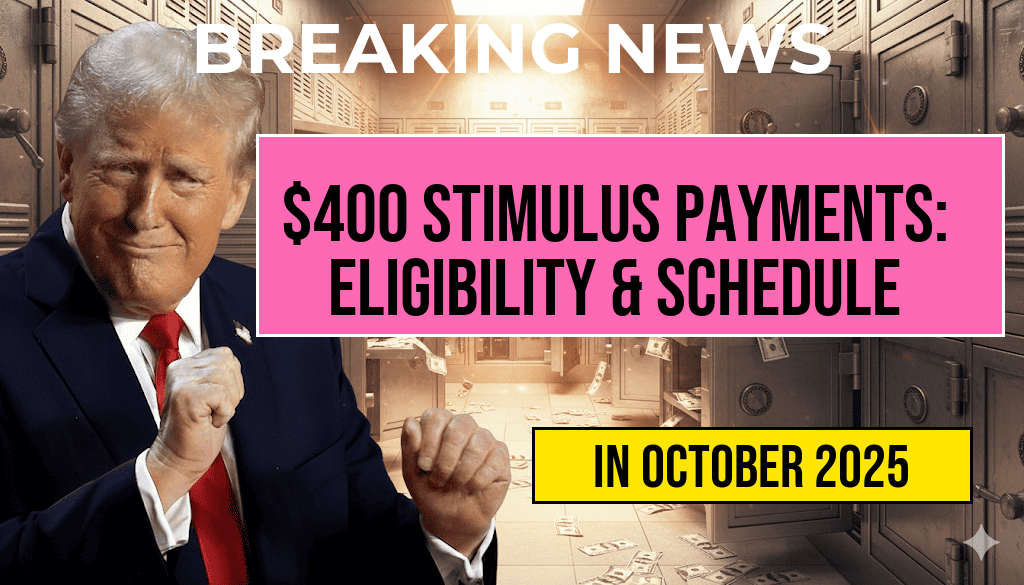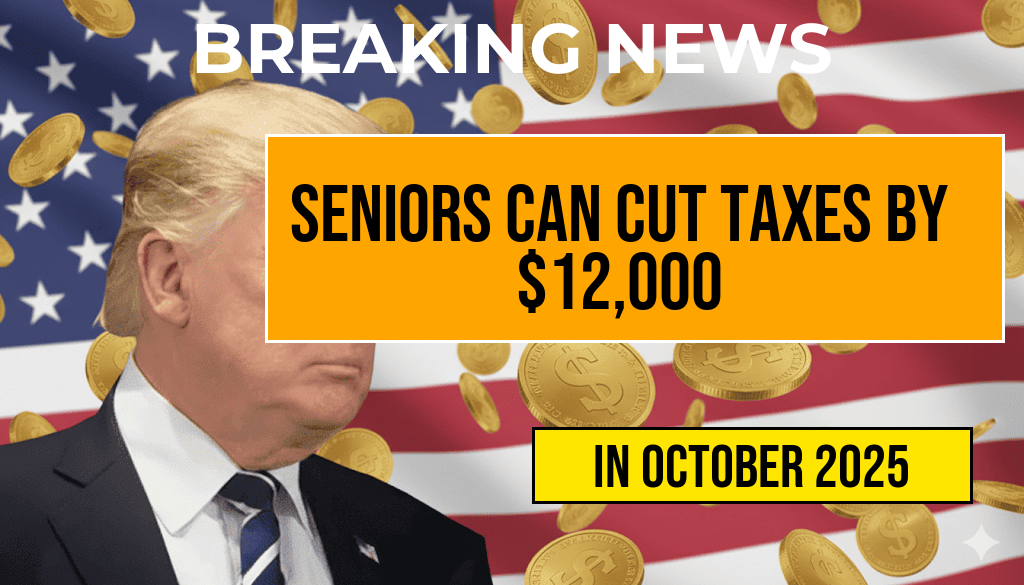A new stimulus payment of up to $400 is currently available to eligible U.S. residents, offering financial relief amid ongoing economic challenges. Unlike previous federal stimulus efforts, this program aims to provide direct assistance to a broader segment of the population, with clear eligibility criteria and an organized payment schedule. The initiative is designed to support individuals and families facing increased expenses, inflation, and other financial pressures. This article outlines who qualifies for the $400 stimulus payment, how to apply, and details about the distribution timeline to ensure recipients can plan accordingly.
Eligibility Criteria for the $400 Stimulus Payment
To qualify for the $400 stimulus, applicants must meet specific requirements set by the administering agency. While eligibility can vary slightly depending on the state or local jurisdiction, general criteria include income limits, residency status, and filing history. Below are the key considerations:
Income and Residency
- Income Limits: Households with an annual income below $75,000 for individuals or $150,000 for married couples filing jointly are eligible. Households exceeding these thresholds may still qualify for partial payments based on income levels.
- Residency: Applicants must be legal residents of the state or jurisdiction offering the stimulus. Proof of residency, such as a driver’s license or utility bill, may be required.
Filing Requirements
- Tax Filing: Most applicants need to have filed a 2022 federal tax return or an equivalent state return for the 2022 tax year.
- Age and Citizenship: Applicants must be at least 18 years old and U.S. citizens or legal residents.
Additional Considerations
- Dependent Status: Payments are primarily directed to individual adults, though some jurisdictions may extend benefits to dependents.
- Previous Stimulus Recipients: Individuals who received prior federal stimulus checks are generally eligible if they meet the current criteria.
Application Process
Most states implementing the $400 stimulus have streamlined online portals for application submissions. Eligible residents are encouraged to gather necessary documentation, including identification, proof of income, and residency verification, prior to starting the application. Some jurisdictions may waive the need for a formal application if residents qualify automatically based on filed tax returns or existing databases.
Automatic vs. Manual Payments
- Automatic Disbursement: Eligible individuals who have filed 2022 taxes or are enrolled in certain benefit programs may receive payments automatically via direct deposit or mailed checks.
- Manual Application: For those who did not file taxes or are newly eligible, a manual application process is available, with detailed instructions provided on official government websites.
Payment Schedule and Distribution Timeline
The distribution schedule for the $400 stimulus varies by jurisdiction but generally follows a multi-phase timeline designed to expedite delivery. Below is a typical schedule based on recent state-level initiatives:
| Phase | Timeframe | Details |
|---|---|---|
| Application Period | Starting October 20, 2023 – November 15, 2023 | Open for new applications and verification of existing claims |
| Processing Period | November 16 – December 15, 2023 | Review of applications and eligibility confirmation |
| Disbursement Start | December 1, 2023 | Initial payments issued via direct deposit |
| Full Distribution | By January 15, 2024 | All eligible recipients should have received their payments |
Additional Resources and Important Notes
Residents are advised to verify their eligibility and application procedures through official state or local government websites. The IRS provides useful guidance on federal filing requirements, while state-specific agencies offer detailed instructions for local stimulus programs. It’s crucial to apply within designated windows to ensure timely receipt of funds, as late applications may be deferred or denied.
Eligibility and payment schedules are subject to change based on legislative updates or funding adjustments. Staying informed through official channels such as government portals or reputable news outlets is recommended. This stimulus effort demonstrates ongoing efforts to bolster economic resilience by providing targeted financial support to those most affected by current economic conditions.
Frequently Asked Questions
Question
Who is eligible to receive the $400 stimulus payment?
Answer
All eligible individuals must meet specific income thresholds and residency requirements. Typically, eligibility is based on filing status and income level for the qualifying period. Check your state’s criteria to confirm eligibility.
Question
How can I apply for the $400 stimulus payment?
Answer
In most cases, eligible individuals will automatically receive the stimulus payment through the tax refund process. If required, you may need to submit additional forms or verify your information through your state’s official portal.
Question
What is the payment schedule for the $400 stimulus payments?
Answer
The complete payment schedule outlines specific dates when payments will be issued, usually starting from a designated date and continuing over several weeks. Refer to the official schedule for exact timelines.
Question
Are there any limitations or exclusions for the $400 stimulus payment?
Answer
Yes, certain income levels, filing statuses, or non-residents may be ineligible. Additionally, individuals receiving other benefits or assistance programs might have different eligibility criteria.
Question
How can I check the status of my $400 stimulus payment?
Answer
You can monitor your payment status through the official government portal or state-specific website. You may need to provide personal information like your Social Security number or filing details to verify your status.
A new stimulus payment of $400 is now available to eligible Americans, offering financial relief amid ongoing economic challenges. The program, launched by federal authorities, aims to support individuals and families who meet specific criteria. Payments are scheduled to be distributed over the coming months, with detailed timelines and eligibility requirements outlined below. The initiative has garnered widespread attention, especially among low- and middle-income households, as it provides a substantial boost in funds intended to cover essential expenses. This article breaks down the key eligibility factors, the complete payment schedule, and how applicants can verify their status to ensure they receive the aid promptly.
Who Qualifies for the $400 Stimulus Payment?
The stimulus program targets a broad segment of the population, though specific eligibility criteria determine who can claim the $400 payment. Factors such as income level, employment status, and recent participation in government assistance programs influence qualification. The federal government has set clear guidelines to streamline the application process and ensure aid reaches those most in need.
Primary Eligibility Criteria
- Income Limits: Households with an annual income below $75,000 for individuals or $150,000 for joint filers are eligible.
- Residency Status: Applicants must be U.S. citizens or legal residents residing in the country as of the application date.
- Tax Filing Status: The program primarily benefits individuals who have filed federal taxes for the most recent tax year.
- Employment Status: Those who experienced a recent loss of income or are currently unemployed may qualify, depending on income thresholds.
- Age Requirements: Applicants must be at least 18 years old unless they are dependents claimed on a parent or guardian’s tax return.
Additional Considerations
Certain groups, such as recipients of Social Security, disability benefits, or Supplemental Nutrition Assistance Program (SNAP) participants, are automatically eligible and do not need to submit a separate application. However, individuals outside these categories should verify their eligibility through the official portal to prevent delays.
How to Apply and Verify Eligibility
Most applicants can verify their eligibility and receive the $400 payment through the designated government website or via their tax filing portal. The process has been simplified to minimize barriers, with online tools guiding users step-by-step. Those who qualify but have not filed their taxes recently may need to submit additional documentation or complete a simplified application form.
Step-by-Step Application Process
- Visit the official stimulus program website (IRS.gov or the relevant federal portal).
- Register or log in using secure authentication methods.
- Complete the eligibility questionnaire, providing income details and residency information.
- Submit the application and wait for confirmation of approval.
- Payments will be issued via direct deposit or check, depending on the chosen method during registration.
Complete Payment Schedule
The federal agency overseeing the stimulus payments has announced a phased distribution schedule designed to ensure efficient and equitable delivery. Payments are anticipated to be issued over a window extending from late April through September 2024, with priority given to those who apply early and meet all eligibility criteria.
| Application Window | Processing Period | Estimated Payment Date |
|---|---|---|
| April 15 – May 15, 2024 | May 16 – June 15, 2024 | June 2024 |
| May 16 – June 15, 2024 | June 16 – July 15, 2024 | July 2024 |
| June 16 – July 15, 2024 | July 16 – August 15, 2024 | August 2024 |
| July 16 – August 15, 2024 | August 16 – September 15, 2024 | September 2024 |
Additional Resources and Support
Applicants seeking further guidance can consult the official IRS FAQ page or contact local assistance programs. Many community organizations are also offering support for filing applications and verifying eligibility, especially for vulnerable populations. Given the variability in personal circumstances, consulting a tax professional or financial advisor can help clarify individual eligibility and optimize the chances of receiving the payment on time.
For more information about federal stimulus initiatives and ongoing relief measures, refer to reputable sources such as Wikipedia’s page on stimulus packages and Forbes’ coverage on government aid programs.
Frequently Asked Questions
Question
Who is eligible to receive the $400 stimulus payment?
Answer
Eligible recipients include individual taxpayers who meet specific income criteria and have filed their tax returns for the relevant year. Certain families and dependents may also qualify, depending on the program’s guidelines.
Question
What are the eligibility criteria for receiving the $400 stimulus payment?
Answer
The main eligibility criteria include having an adjusted gross income below a specified threshold, being a resident or citizen of the country, and having filed your taxes within the required period. Additional criteria may apply based on household status and income levels.
Question
When is the complete payment schedule for the $400 stimulus expected to occur?
Answer
The payment schedule is outlined to commence from a specific start date, with distributions occurring in phases over several weeks or months. Details about exact dates and methods of payment will be announced by the authorities.
Question
How can eligible individuals check the status of their $400 stimulus payment?
Answer
Individuals can check their payment status through official government portals, using personal identification such as Social Security numbers or tax ID numbers. Notifications via email or mail may also be provided once the payment is processed.
Question
Are there any restrictions or exclusions that could prevent someone from receiving the $400 stimulus?
Answer
Yes, individuals who do not meet the income thresholds, are non-residents, or have outstanding debts such as taxes or student loans may be excluded from receiving the payment. Specific exclusions are detailed in the official eligibility guidelines.






